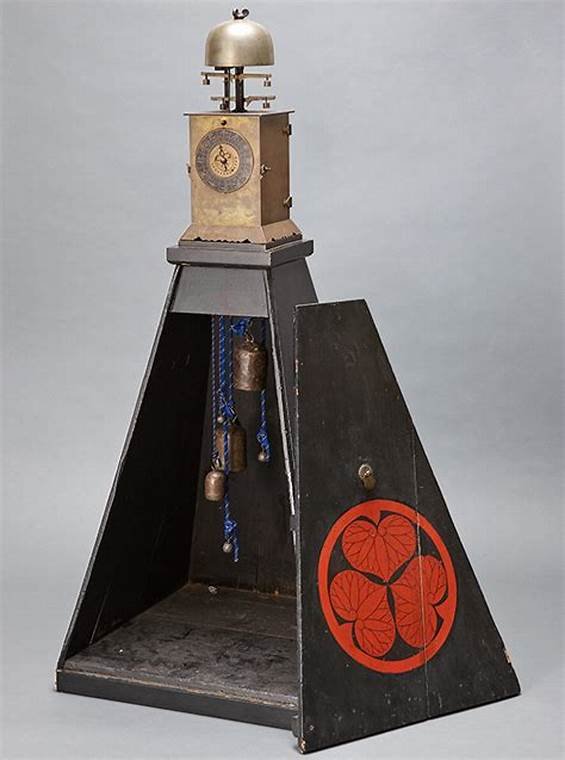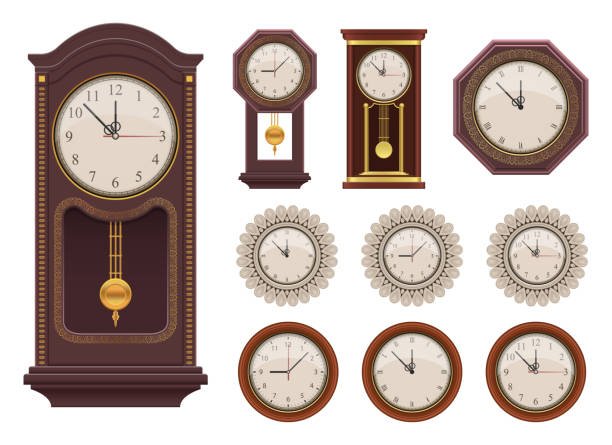Japan is a country renowned for its deep respect for tradition, combined with a forward-thinking approach to technology and innovation. This unique cultural duality is perfectly embodied in the world of Japanese clocks. For centuries, Japanese clockmakers have skillfully merged traditional craftsmanship with cutting-edge advancements, resulting in timepieces that are not only precise and reliable but also rich in history and artistry. Let’s explore how Japanese clocks continue to evolve by blending the old with the new.
1. The Legacy of Traditional Japanese Clocks
The history of clockmaking in Japan dates back to the Edo period (1603–1868), when clocks were introduced as a new technology from the West. Early Japanese clocks, known as wadokei, were adapted to the country’s timekeeping system, which divided the day into unequal seasonal hours. These clocks were typically hand-crafted from wood and metal, featuring exquisite designs and intricate mechanical systems.
Despite their introduction from Europe, these traditional clocks reflected Japanese aesthetics, often featuring ornate decorations that symbolized nature, spirituality, and harmony. Today, wadokei are prized collector’s items and continue to inspire modern clockmakers in Japan, who seek to preserve the essence of traditional craftsmanship.
2. Seiko: The Pioneer of Quartz Technology
While traditional timepieces play a crucial role in Japan’s horological history, it was the innovation of Seiko that truly revolutionized modern clockmaking. Seiko, founded in 1881, is credited with developing the world’s first quartz clock in 1969. This breakthrough in quartz technology drastically improved the accuracy and reliability of timekeeping, making mechanical clocks nearly obsolete in terms of precision.
Despite their advancements in quartz and digital timekeeping, Seiko has maintained its respect for traditional Japanese craftsmanship. Many of Seiko’s high-end models, such as those from the Grand Seiko line, combine the precision of quartz or mechanical movements with hand-polished designs and attention to detail, embodying the fusion of tradition and modernity.
3. Rhythm and Citizen: Innovation Meets Aesthetics

Another key player in blending tradition and innovation is Rhythm, a brand known for its high-quality motion clocks. Rhythm’s clocks often feature intricate designs that harken back to traditional Japanese artistry, while incorporating modern features like chimes, pendulum movements, and rotating elements. Their motion clocks blend art and technology, making them unique decorative pieces that are also highly functional.
Citizen, another iconic Japanese brand, is well-known for its commitment to sustainability and technology. The company’s Eco-Drive technology powers clocks and watches through natural and artificial light, reducing the need for battery replacements. While these timepieces are cutting-edge in their functionality, Citizen ensures that they maintain the elegance and simplicity of traditional Japanese design.
4. Lemnos: Minimalism Meets Modern Design
In recent years, the Japanese clock brand Lemnos has gained popularity for its minimalist approach to timekeeping. Known for collaborating with prominent designers, Lemnos creates modern clocks that reflect the “less is more” philosophy, a principle deeply rooted in Japanese aesthetics like wabi-sabi (the beauty of imperfection) and shibui (simple, subtle beauty).
While Lemnos clocks are designed with contemporary homes in mind, they maintain a strong connection to traditional Japanese craftsmanship. The brand works with local artisans to create clocks that are functional yet artistic, reflecting Japan’s reverence for simplicity and beauty.
5. Preserving Tradition Through Technology
One of the most fascinating aspects of Japanese clockmaking is the way technology is used to preserve traditional elements. For example, modern clockmakers have begun to recreate antique Japanese clocks using digital and mechanical advancements. These recreations allow enthusiasts to experience the beauty of historic timepieces while enjoying the convenience of modern accuracy.
Moreover, Japanese clockmakers take inspiration from historical designs and cultural symbols. From the use of nature motifs like cherry blossoms to the minimalist philosophy seen in Zen art, modern clocks continue to reflect Japan’s deep cultural heritage while utilizing advanced technology to ensure precision and functionality.
Conclusion
The world of Japanese clocks is a perfect example of how tradition and modernity can coexist harmoniously. Whether it’s Seiko’s quartz innovations, Rhythm’s motion clocks, or Lemnos’ minimalist designs, Japanese clockmakers have skillfully blended traditional craftsmanship with cutting-edge technology. This seamless integration of the old and the new is what makes Japanese clocks truly unique—offering not just a way to tell time, but a way to connect with Japan’s rich cultural heritage while embracing the future of horology.
For those who appreciate both history and innovation, Japanese clocks offer the best of both worlds, where each timepiece tells not just the time, but a story of craftsmanship, culture, and progress.





Wenn sie nicht die Dienste anbieten, die unsere Spieler wünschen, dann verdienen sie ihren Platz hier
oben im Casino Residency Private Club auch nicht.
Das wird durch die Tatsache vorangetrieben, dass alle Softwareanbieter im Park ihre
Studiozeit verwendet haben, um sicherzustellen, dass alle
ihre Spiele und Plattformen vollständig für mobile Geräte optimiert sind.
Das bedeutet für Sie, dass es sinnvoll ist, die Großzügigkeit der Willkommensboni
und all die Extras, die damit verbunden sind, voll auszunutzen.
Der Willkommensbonus dient in erster Linie dazu,
Sie als vollwertiges Mitglied zu gewinnen. Willkommensboni
sind oft deshalb so großzügig, weil neue Online Casinos Ihren persönlichen Spielstil noch nicht kennen. Diese Anbieter
müssen nicht aufs Ganze gehen und verlockende Willkommensboni produzieren,
da sie bereits eine gut etablierte Spieler-Community haben, die regelmäßig spielt.
Bei der Spielauswahl zählt nicht nur die Vielfalt, sondern auch die Qualität.
Wir prüfen daher, ob das Casino eine gültige Glücksspiellizenz
besitzt und von welcher Behörde diese ausgestellt wurde.
Damit Du bei der Vielzahl an neuen Gamblinganbietern den Überblick behältst, führen wir eine systematische und unabhängige Bewertung
durch.
In den vergangenen Jahren hat sich der europäische Glücksspielmarkt stark gewandelt.
Einige bieten für Ihre Spieler sogar einen Bonus ohne Umsatzbedingungen an.
Häufig besteht der Treuebonus unter anderem aus einem wöchentlichen Einzahlungsbonus,
der für alle registrierten Spieler gilt. Die Anzahl der
Freispiele und deren Wert für jede Drehung sind ebenfalls vorab vom Betreiber bestimmt.
References:
https://online-spielhallen.de/rizk-casino-aktionscode-dein-weg-zu-pramien-und-spielspas/
Credits range from 1c to $1 and there’s linked jackpots on several machines that progressively grow
until won. We’re home to nearly 500 machines, located on both our main casino floor and
Boardwalk floor. The Casino’s bar and lounge space features live music on Fridays and Saturdays.
Wrest Point is Australia’s first ever casino.
Create equitable learning environments that help students develop knowledge with familiar apps
essential to both academic and future career success. Quickly design anything for you and your family—birthday cards, school flyers, budgets, social posts,
videos, and more—no graphic design experience needed.
Anyone in your organization can quickly create documents,
presentations, and worksheets within a single, unified app experience.
Our Valet Parking service is available to all guests staying at Wrest Point.
Dial 75 on your in-room phone to arrange a meal
in the privacy of your room. Manual, automatic, family,
luxury, sporty and larger 4WDs and people mover vehicles are available.
References:
https://blackcoin.co/mind-boggling-facts-you-didnt-know-about-online-casino-gaming/